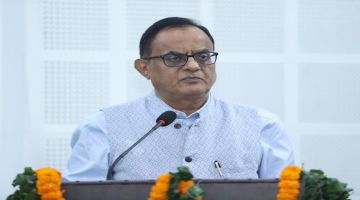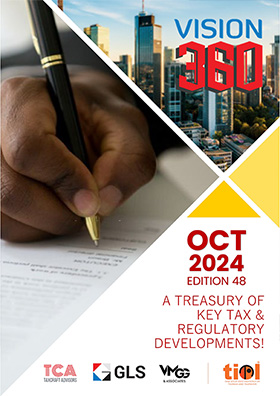CX - Valuation - Transaction Value - Sales Tax Incentive - 75% of Sales tax collected retained with assessee as incentive - Not includible in AV prior to 1.7.2000 - Includible in transaction value after 1.7.2000 - SC
By TIOL News Service
NEW DELHI, MAR 03, 2014: SEVERAL appeals filed by Revenue are heard and decided together. In all these appeals, the common issue is whether the amount of sales tax collected by the asssessees and retained with them, is includible in the Assessable value for payment of excise duty. Under the Sales Tax New Incentive Scheme for Industries, 1989, the assessee was entitled to retain with it 75% of the sales tax collected and pay only 25% to the Government.
The Tribunal referred to the circular No. 378/11-98-CX dated 12.3.1998 issued by the Central Board of Excise and Customs (CBEC) and came to hold that sales tax was deductible from the wholesale price for determination of assessable value under Section 4 of the Act for levy of Central Excise Duty. Being of this view, it set aside the order passed by the Commissioner of Excise and directed for refund of the deposits made during investigation and the deposit made in pursuance of the order passed by the Tribunal.
Aggrieved Revenue is in appeal. Revenue relied on the decision of the Supreme Court in Modipon Fibre Company, Modinagar, U.P. v. Commissioner of Central Excise, Meerut. [2007-TIOL-188-SC-CX ]
The contention of the assessee in that case was that they were entitled to deduction in respect of Turnover Tax (TOT) at the rate of 2% though Government of Gujarat by notification dated 19th October, 1993 had exempted sale of yarn under certificate in Form 26 to the extent of TOT exceeding .5% of the total turnover if the processed yarn was sold in the State of Gujarat. Thus, there was dual rate of 2% and .5% TOT in the State of Gujarat, with the lower rate being applicable to sales in backward area. Relying upon the expression/word "payable" used in Section 4(4)(d)(ii}, it was submitted by the assessee that it refers to the duty payable in the tariff and not any concession or exemption. The contention was rejected by the Supreme Court observing that the word "payable" was descriptive and one has to see the context in which the said word finds place.
The Court ruled that though in respect of backward areas sales, the rate of TOT was .5%, whereas TOT rate in normal area sales was 2%, yet the assessee had suppressed the aforesaid data to claim TOT deduction @ 2% to compute the assessable value on the entire sales including sales made in backward area. This was wrong and the department was justified in calling upon the assessee to pay the differential excise duty.
The Court in the said decision has observed that by claiming higher deduction @ 2% instead of .5%, the assessee was gaining a windfall and this was not justified.
In the case at hand, the assessee has claimed that there is difference between grant of incentive and extension of benefit of exemption, and the scheme, i.e., the "Rajasthan Sales Tax Incentive Scheme 1989" does not relate to exemption but incentive. To elaborate, the assessee, under the said Scheme, is permitted to retain 75% of the sales tax collected as incentive and is liable to pay 25% to the department. 75% of the amount retained has been treated as incentive by the State Government. It is pointed out that such retention of sales tax is a deemed payment of sales tax to the State exchequer and for the said purpose reliance is placed on Circular No. 378/11/98-CX dated 12.3.1998 issued by C.B.E.C.
In the aforesaid circular, three situations were envisaged, viz.,
(i) exemption from payment of sales tax for a particular period;
(ii) deferment of payment of sales tax for a particular period; and
(iii) grant of incentive equivalent to sales tax payable by the unit.
The above three situations had been examined by the Board in consultation with the Ministry of Law. As far as situation (iii) is concerned, the circular stated thus:-
"6. Examination of the situation, mentioned above in para 2(ii) & (iii), in the referring note give an indication that sales tax is payable by the assessee in both the situations. It is payable after a particular period in the second case. On the other hand, in the third situation, the sales tax is considered payable by the assessee even though it is paid by the State Government, the assessee keeping the said amount as cash incentive. In this situation sales tax would be considered as payable within the meaning of the provisions of Section 4(4)(d)(ii) of the Act.
7. We are therefore, of the opinion that in the category of cases mentioned in para 2(i), sales tax is not deductible whereas in the category of cases mentioned at (ii) and (iii) sales tax is deductible from the wholesale price for determination of assessable value under Section 4 of the Act for levy of Central Excise duty."
The Supreme Court observed,
"On perusal of the assessment orders brought on record, it is quite clear that in pursuance of the Scheme 25% of the sales tax amount was credited to the account of the State Government as payment towards sales tax by the manufacturer. On a studied scrutiny of the scheme we have no scintilla of doubt that it is a pure and simple incentive scheme, regard being had to the language employed therein. In fact, by no stretch of imagination, it can be construed as a Scheme pertaining to exemption. Thus, analysed, though 25% of sales tax is paid to the State Government, the State Government instead of giving certain amount towards industrial incentive, grants incentive in the form of retention of 75% sales tax amount by the assessee. In a case of exemption, sales tax is neither collectable nor payable and if still an assessee collects any amount on the head of sales tax, that would become the price of the goods. Therefore, an incentive scheme of the present nature has to be treated on a different footing because the sales tax is collected and a part of it is retained by the assessee towards incentive which is subject to assessment under the local sales tax law and, as a matter of fact, assessments have been accordingly framed. In this factual backdrop, it has to be held that circular entitles an assessee to claim deduction towards sales tax from the assessable value. The fact situation in Modipon Fibre Company, as is manifest, was different. In our considered opinion what has been stated in Modipon Fibre Company cannot not be extended to include the situation (iii). We are inclined to think so as the definition of term "value" under Section 4(4)(d) was slightly differently worded and the CBEC had clarified the same in the circular dated 12.3.1998 and benefits were granted."
What is the position after 1.7.2000 ? The Supreme Court observed,
"Unless the sales tax is actually paid to the Sales Tax Department of the State Government, no benefit towards excise duty can be given under the concept of "transaction value" under Section 4(4)(d}, for it is not excludible. As is seen from the facts, 25% of the sales tax collected has been paid to the State exchequer by way of deposit. The rest of the amount has been retained by the assessee. That has to be treated as the price of the goods under the basic fundamental conception of "transaction value" as substituted with effect from 1.7.2000. Therefore, the assessee is bound to pay the excise duty on the said sum after the amended provision had brought on the statute book."
Supreme Court held:
1. the assessees in all the appeals are entitled to get the benefit of the circular dated 12.3.1998 which protects the industrial units availing incentive scheme as there is a conceptual book adjustment of the sales tax paid to the Department.
2. With effect from 1.7.2000 they shall only be entitled to the benefit of the amount "actually paid" to the Department, i.e., 25%.
3. The set off shall operate only in respect of the amount that has been paid on the raw material and inputs on which the sales tax/ purchase tax has been paid.
4. That being the position the adjudication by the tribunal is not sustainable. Similarly the determination by the original adjudicating authority requiring the assessees to deposit or pay the whole amount and the consequential imposition of penalty also cannot be held to be defensible.
Supreme Court directed, "Therefore, we allow the appeals in part, set aside the orders passed by the tribunal as well as by the original adjudicating authority and remit the matters to the respective tribunals to adjudicate as far as excise duty is concerned in accordance with the principles set out hereinabove. We further clarify that as far as imposition of penalty is concerned, it shall be dealt with in accordance with law governing the field. In any case, proceeding relating to the period prior to 1. 7 .2000 would stand closed and if any amount has been paid or deposited as per the direction of any authority in respect of the said period, shall be refunded. As far as the subsequent period is concerned, the tribunal shall adjudicate as per the principles stated hereinbefore."
(See 2014-TIOL-19-SC-CX)














